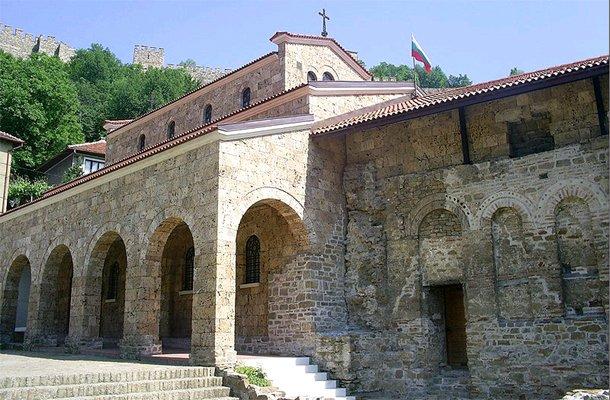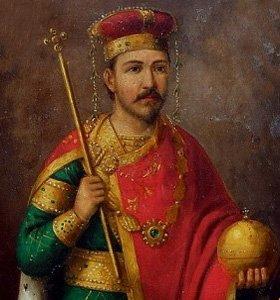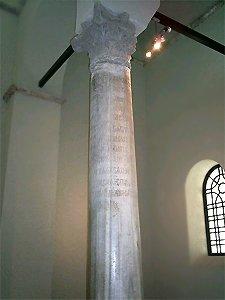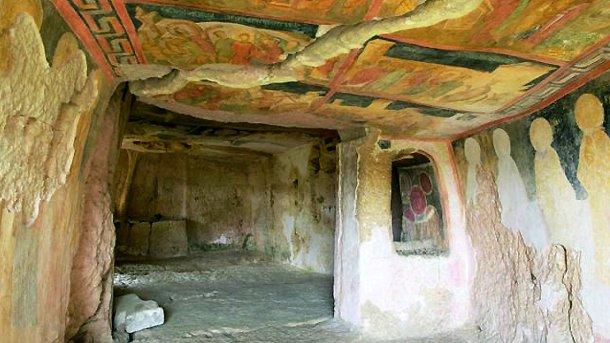

© Photo: bg.wikipedia.org
“Ivan Assen came to power in a situation that was highly complicated,” Prof. Pavlov goes on to say. “Under his predecessor Boril the country had lost territory and to some extent, potential as well. In some measure he managed to consolidate the Bulgarian positions in Thrace and by diplomatic and other kinds of maneuvering to restore Bulgarian rule in Macedonia as well. But, on the whole, Bulgaria had lost the prestige it had enjoyed under the first three of the Assen dynasty – Assen, Petar and Kaloyan. The country was in a delicate position and upon ascending the throne Ivan Assen pursued a steadfast policy of turning it into factor number one in the Balkans. Of course, no less than his predecessors, especially his father Assen and his uncles Petar and Kaloyan, his prime objective was the unification of all lands populated by Bulgarians. And Ivan Assen was the ruler who attained this objective.”
In 1230 Theodore Comnenus, ruler of Epirus marched on Bulgaria despite the peace treaty with the Bulgarian Tsar. At the head of a small army, but filled with audacity, Ivan Assen II vanquished the invaders in the battle at Klokotnitsa near the present-day town of Haskovo, Southern Bulgaria. According to

© Photo: bg.wikipedia.org
Byzantine chroniclers, he let the enemy soldiers go back home, thus gaining the reputation of a wise ruler. This victory paved the way to the unification of the lands, populated by Bulgarians. Thus he fulfilled the legacy of his forefathers wisely, without suffering great losses, mostly by diplomacy, but by force when the need arose.
Another important fact in his reign was his rejection of the union with the Roman church, concluded by his uncle Kaloyan. Thus in 1235 the country turned to Orthodoxy with an independent head of its church – a patriarch. The stagnation in culture from the time of Byzantine rule was now being overcome.
“Unfortunately, our Medieval legacy suffered a heavy blow in the centuries of Ottoman domination that followed, leaving us few monuments from the time of Ivan Assen II,” Plamen Pavlov says. “But we do have the remarkable church Sts. Peter and Paul in Tarnovo, which, according to some sources, was built with donations by his wife Ana-Maria, i.e. of the Tsar himself. It is a medieval monument which needs to be popularized as it is no less interesting than the Boyana church near Sofia which is on the UNESCO world heritage list. The rock church complex near Ivanovo, also on the UNESCO world heritage list was started under Ivan Assen II. And this took place at the personal bidding of the tsar and his close friend, patriarch Joachim I. The beginnings were laid at a time when Joachim was still a monk and abbot of a small monastery. So, what we see is that the Bulgarian ruler was patron of the foremost representatives of the clergy. The very fact of the restoration of the Patriarchate and its Orthodox legitimacy gave a powerful impetus to the development of culture.”
It is important to note that Ivan Assen II was also benefactor of the monasteries on Mount Athos. He even toured them giving his powerful support to Zograph and Hilendar, where the monks were Bulgarian, but to other cloisters as well. At that time Athos was regarded as an intellectual centre of Orthodox culture and art and what Ivan Assen II did was crucial.

© Photo: archive
“Talking of the role of Ivan Assen II as a cultural strategist and keeper of national self awareness, we inevitably turn to the Forty Holy Matyrs church in Tarnovo, perhaps the most emblematic of all churches throughout the centuries long history of the country,” Prof. Pavlov notes. “He erected it to commemorate his sublime victory at Klokotnitsa after which all ethnic Bulgarian lands were united, giving Bulgaria the role of leading power on the Balkans. But the idea was not just to make the church a symbol of victory against the adversary, or a vault for the royal family, but to build a pantheon to Bulgarian history. It is no coincidence that columns from the ancient capitals Pliska and Veliki Preslav were taken there. And it is no coincidence that the inscription, commemorating Ivan Assen II’s victory, is carved into a Roman pillar – a way to highlight the fact that the Bulgarian state is very ancient. That this is that same Bulgarian kingdom, ruled by Kroum and Omourtag, whose columns are inside this temple. Evidently, his sense of historical memory and of statehood was extremely powerful.”
English version: Milena Daynova
On February 4, Blagoevgrad will commemorate the 153rd anniversary of the birth of Bulgarian revolutionary Gotse Delchev with a wreath-laying ceremony. The ceremony will take place at 11am in front of the hero's monument on Macedonia Square. Voivode..
In 2024, the National History Museum sent expeditions to 22 archaeological sites. More than 1,400 artifacts were found during the season spanning the period from prehistoric times down to the Middle Ages. The most significant of these discoveries are..
From 31 January 2025, the first podcast about Bulgarian Orthodox communities abroad - Bridge of Faith - will be launched. The concept is the brainchild of the team of the Bulgarian National Radio's (BNR) overseas programme - Radio Bulgaria, and is being..
On February 4, Blagoevgrad will commemorate the 153rd anniversary of the birth of Bulgarian revolutionary Gotse Delchev with a wreath-laying ceremony...

+359 2 9336 661
